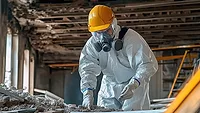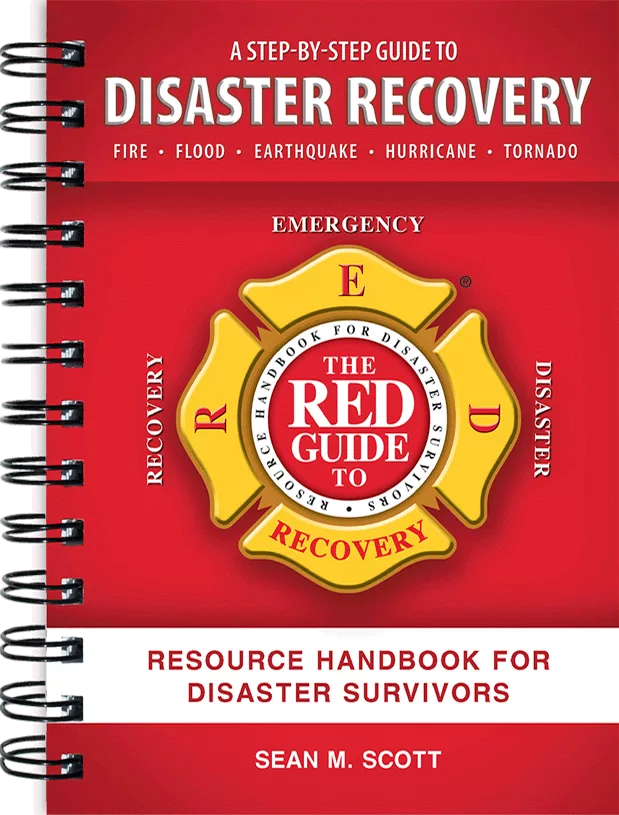An Essential Guide to Crime Scene Cleanup: Process, Safety, and Key Considerations
Understanding the Critical Aspects of Crime Scene Cleanup

Photo: Hiraman / E+ via Getty Images
Crime scene cleanup is a vital service that addresses the aftermath of traumatic events, including homicides, self-cessations, and accidental or unattended deaths. This complex cleanup process requires specialized knowledge, strict adherence to safety standards, and a sensitive approach. This article explores the typical crime scene cleanup process, highlighting key considerations for safety and thoroughness.
The Typical Crime Scene Cleanup Process
The crime scene cleanup process involves several critical steps:
-
Certified Training: Organizations like the Institute of Inspection, Cleaning and Restoration Certification (IICRC) provide specialized training for professionals involved in trauma and crime scene cleanup. These certifications focus on best practices, safety protocols, and technical skills necessary to handle sensitive and hazardous situations.
Microbial Warrior International also offers certifications like the Certified Forensic Operator® designation and High Risk/High Level Decontamination Specialist training.
-
Immunizations: According to the ANSI/IICRC S540 Standard for Trauma & Crime Scene Cleanup (2nd edition, 2023), page 28, Section 2.12 states the following: Companies performing trauma and crime scene or illicit drug remediation should refer their technicians and workers to their primary care physician (PHCP) for information on available immunizations (e.g., tetanus, diphtheria boosters, Hepatitis A & B) required to reduce the risk of infectious diseases.
-
Initial Assessment: Upon arrival, the cleanup team assesses potential health and safety hazards once they have ensured that law enforcement has completed their investigation.
-
Documentation: The team documents the scene through photos and notes, recording the location and condition of biohazardous materials for insurance claims and future reference.
-
Personal Protective Equipment (PPE): Cleanup personnel wear appropriate PPE, including gloves, masks, goggles, and protective clothing, to minimize exposure to hazardous materials.
-
Containment Setup: The team establishes containment measures, such as barriers and signage, to restrict access to the area and may deploy air scrubbers to maintain air quality.
-
Biohazard Removal: Contaminated materials, including blood and bodily fluids, are removed and placed in biohazard disposal bags for proper disposal in accordance with specific local, state and federal regulations.
-
Cleaning and Disinfection: All surfaces are cleaned and disinfected using an EPA-registered hospital-grade disinfectant effective against various pathogens. This process follows IICRC S540 standards to ensure effective pathogen removal. After cleaning, a second round of ATP (adenosine triphosphate) testing is conducted to assess cleanliness before professional disinfection.
-
Final Inspection: After cleaning, the team conducts a thorough inspection, including testing surfaces, to confirm that all contaminants have been addressed and the area is safe for reoccupation. The team compiles detailed documentation of the cleanup process, including photographs and compliance records, for property owners and potential insurance claims.
Changes for Illicit Drug Scenes
When dealing with crime scenes involving illicit drugs, the process requires additional precautions. Teams must be vigilant for toxic substances, such as methamphetamine and fentanyl residues, requiring specialized handling and disposal. For example, 2 milligrams of fentanyl can be lethal for most people. This amount can be significantly lower for individuals who are not tolerant of opioids. A trained and competent person must conduct a thorough assessment, establish proper protocols before remediation begins, and conduct safety meetings before proceeding.
Hidden Dangers During Cleanup
Crime scene cleanups present several hidden dangers. One significant risk is exposure to biohazards including bloodborne pathogens like HIV and hepatitis. Additionally, chemical hazards from toxic substances, particularly those associated with illicit drugs, can endanger workers if not properly managed. Structural hazards also pose risks, especially in violent crime scenes where there may be damage or potential collapse. Cleanup personnel must remain vigilant for sharp objects such as needles and broken glass, which can cause injuries. Moreover, the psychological stress of dealing with traumatic situations can take an emotional toll on workers, highlighting the necessity for mental health support.
Training for Crime Scene Cleanups
To prepare for crime scene cleanups, team members undergo extensive training, including:
- Biohazard Handling: Learning proper techniques for handling and disposing of biohazardous materials.
- PPE Usage: Education on selecting and using appropriate PPE for various scenarios.
- Decontamination Procedures: Training on effective cleaning and disinfection techniques according to ANSI/IICRC S540-2023 standards must be performed.
- Hazardous Materials Training: Instruction on recognizing and safely dealing with toxic substances.
Industry Standards and Regulations
Compliance with standards and regulations is crucial during crime scene cleanup:
- ANSI/IICRC S540: This standard outlines industry-accepted practices for trauma scene cleanup, ensuring safety and thoroughness.
- OSHA Regulations: The Occupational Safety and Health Administration establishes regulations concerning workplace safety and the handling of hazardous materials.
- Local and State Regulations: Compliance with local laws regarding the disposal of biohazardous waste and environmental protection is essential.
Safety Protocols and Essential Tools
Key safety protocols include:
- Safety Briefings: Conducting pre-job meetings to assess potential hazards and review safety measures before starting the cleanup.
- Emergency Response and Control Plans: Establishing procedures for medical emergencies or exposure incidents. Employers shall follow all applicable governmental regulations as required to establish an exposure control plan. In the absence of federal, state, and local regulations, the employer should develop a bloodborne pathogen protocol.
- Mental Health Support: Providing access to counseling resources to help team members cope with the emotional strain of their work.
Essential tools are critical for safe and effective crime scene cleanup. Personal protective equipment (PPE) including gloves, masks, goggles, and protective clothing, is vital to safeguard workers from hazardous materials. Biohazard bags ensure safe disposal of contaminated materials, while EPA-registered disinfectants are effectively addressing bloodborne pathogens. Cleaning tools like mops, brushes, and specialized vacuum cleaners designed for biohazard cleanup ensure thorough decontamination of surfaces. Additionally, HEPA air scrubbers help maintain air quality, and suction pumps and steam cleaners aid in efficient liquid removal.
Common Misconceptions About Crime Scene Cleanup
Crime scene cleanup is often surrounded by misconceptions that can lead to misunderstandings about the nature of the work. One common misconception is that crime scene cleanup is straightforward and can be handled by anyone; it requires specialized training and strict adherence to safety protocols to ensure thoroughness and safety.
Another misconception is that cleanup crews operate similarly to police or investigative teams; however, their primary focus is on remediation and restoration, not investigation. Additionally, many people believe that all crime scene cleanups involve gruesome scenes and violence. Many cleanups pertain to non-violent deaths or unattended fatalities, which are often less graphic than typically portrayed in the media.
Advice for Property Owners
For property owners facing the aftermath of a crime scene, it is crucial to take appropriate steps to ensure safety and proper recovery. Hiring certified crime scene cleanup professionals is essential, as they are trained to handle hazardous materials safely and effectively. DIY cleanups can pose serious health risks and worsen contamination due to inadequate training and equipment. It's also important to document everything thoroughly, keeping detailed records and photographs of the damage for insurance claims and legal purposes. Seeking professional counseling services can provide valuable support in processing the emotional impact of the incident.
Looking for a reprint of this article?
From high-res PDFs to custom plaques, order your copy today!







